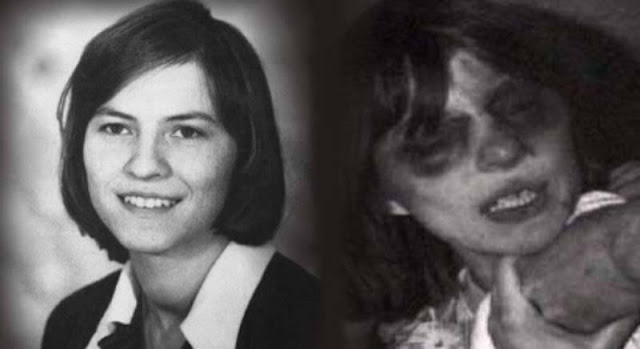PADRE PIO STAYED FAITHFUL TO THE CHURCH THROUGH ALL THAT WOULD HAPPEN TO HIM.
Because of the Unusual Abilities Padre Pio was Claimed to Possess. The Holy See instituted Investigations of the Related Accounts. The Local Bishop, P. Gagliardi, did Not Believe Padre Pio’s alleged Miracles, Suggesting that His Capuchin Brothers were Making a Display out of the Monk to Gain Financial Advantage. When Pius XI Became Pope in 1922, the Vatican became Extremely Doubtful. Padre Pio was Subject to Numerous Investigations.
The Vatican Imposed Severe Sanctions on Padre Pio to Reduce Publicity about him: It Forbade Him from Saying Mass in Public, Blessing People, Answering Letters, Showing His Stigmata Publicly, and Communicating with Padre Benedetto, His Spiritual Director. Padre Pio was to be Relocated to Another Convent in Northern Italy. The Local People Threatened to Riot, and The Vatican Left Padre Pio Where he was. Fearing these Local Riots, the Vatican Dropped a Plan to Transfer Padre Pio to Another Friary, and a Second Plan for Removal was Also Changed. From 1921 to 1922 he was Prevented from Publicly Performing his Priestly Duties, such as Hearing Confessions and Saying Mass. From 1924 to 1931,
The Holy See made Statements Denying that the Events in Padre Pio's Life were Due to Any Divine Cause. The Founder of Milan's Catholic University of the Sacred Heart, Friar, Physician and Psychologist Agostino Gemelli, met Padre Pio Once, for a Few Minutes, and was Unable to Examine His Stigmata. According to Agostino Gemelli, Padre Pio was "An Ignorant and Self-Mutilating Psychopath who Exploited People's Credulity." Gemelli Speculated that Padre Pio kept his Wounds Open with Carbolic Acid. As a Result, Padre Pio was Required to Wrap the Wounds in Cloth. For Many Years, He Wore Fingerless Gloves that Concealed his Wounds. According to Believers, the Bleeding Continued for some 50 years until the Wounds Closed Within Hours of His Death.
A Pharmacist Sold Four Grams of Carbolic Acid to Padre Pio in the Year 1919. The Archbishop of Manfredonia, Pasquale Gagliardi, Reported this as Evidence that Padre Pio Could Have Effected the Stigmata with Acid. This Suggestion was Examined and Dismissed by The Vatican. By 1933, the Tide Began to Turn, with Pope Pius XI Ordering the Holy See to Reverse its Ban on Padre Pio’s Public Celebration of Mass. The Pope said, "I Have Not Been Badly Disposed toward Padre Pio, but I Have Been Badly Informed." In 1934, the Friar was Again Allowed to Hear Confessions. He was also Given Honorary Permission to Preach despite Never Having Taken the Exam for the Preaching License. Pope Pius XII, who Assumed the Papacy in 1939, Encouraged Devotees to Visit Padre Pio. In 1940, Padre Pio began Plans to Open a Hospital in San Giovanni Rotondo, to be Named the Casa Sollievo della Sofferenza or "Home to Relieve Suffering."
The Hospital Opened in 1956. Barbara Ward, a British Humanitarian and Journalist on Assignment in Italy, Played a Major Role in Obtaining for This Project a Grant of $325,000 from The United Nations Relief and Rehabilitation Administration (UNRRA). In Order that Padre Pio might Directly Supervise this Project, Pope Pius XII in 1957 Granted Him Dispensation from his Vow of Poverty. Padre Pio's Detractors used this Project as Another Weapon to Attack Him, Charging Him with Misappropriation of Funds. Pope Paul VI (Pope from 1963 to 1978), in the Mid-1960s Dismissed All Accusations Against Padre Pio. In 1947, Father Karol Józef Wojtyla (Later Pope John Paul II), a Young Polish Priest who was Studying in Rome at the Pontifical University of Saint Thomas Aquinas, Angelicum, Visited Padre Pio, Who Heard His Confession. Austrian Cardinal Alfons Stickler reported that Wojtyla Confided to Him that During This Meeting, Padre Pio told Him He Would One Day Ascend to "The Highest Post in The Church though Further Confirmation is Needed." Cardinal Stickler said that Wojtyla Believed that The Prophecy was Fulfilled When He Became a Cardinal. (John Paul's Secretary, Stanislaw Dziwisz, Denies the Prediction, While George Weigel's Biography Witness to Hope, Which Contains an Account of the Same Visit, Does Not Mention it.)
According to Oral Tradition, Bishop Wojtyla Wrote to Padre Pio in 1962 to Ask Him to Pray for Dr. Wanda Poltawska, a Friend in Poland who Was Suffering From Cancer. Later, Dr. Poltawska's Cancer Was Found to be in Spontaneous Remission. Medical Professionals Were Unable to Offer an Explanation for the Phenomenon. However, John Paul II, Who Was The Pope From 1978 to 2005, Started The Canonization Process of Padre Pio; He Was Canonized by John Paul II in 2002. Pope Pius XI, Who Began the End of the Restrictions Against Padre Pio around 1933. Pope Pius XII, pope from 1939, encouraged devotees to visit Padre Pio. Pope Paul VI, in the mid-1960s, firmly dismissed all accusations against Padre Pio.




Mga Komento
Mag-post ng isang Komento